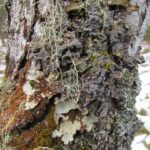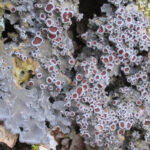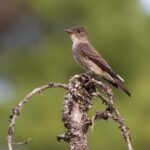Churchover Forests
29 May 2025
A large newly protected property represents the power of connection: it not only bridges together protected landscapes, but also it has been protected in partnership between the Nature Trust and the Southwest Nova Biosphere Region Association. We are so grateful to the Southwest Nova Biosphere for their hard work and support in advancing conservation work in the region.
The Churchover Forests property sits within the southwest region of the province known as Kespukwitk, one of the seven traditional districts of Mi’kma’ki. This is a priority area for the Nature Trust and for many diverse and collaborative conservation efforts; the entire region was designated as a UNESCO biosphere region in 2001 and remains one of only 19 ecosystems in Canada that hold this special designation. Conservation is one of three key elements in the work of a biosphere region, and we hope that this will be the first of many future collaborations to protect nature in the area.
 The property itself encompasses 350 acres bordering the Bowers Meadows Wilderness Area, extending the protected area and enhancing the connectivity between protected landscapes in the region. It holds relatively undisturbed habitats, including old growth and mature forests, shrubland, and a variety of wetland features, including open bogs, shrub bogs, treed bogs, and treed swamps.
The property itself encompasses 350 acres bordering the Bowers Meadows Wilderness Area, extending the protected area and enhancing the connectivity between protected landscapes in the region. It holds relatively undisturbed habitats, including old growth and mature forests, shrubland, and a variety of wetland features, including open bogs, shrub bogs, treed bogs, and treed swamps.
The Nature Trust’s field inventory will be completed this summer, but based on consultation with local experts and analysis of habitat suitability models we will be looking for several bird species at risk, rare plants, and lichens. For example, the property holds suitable nesting and foraging areas for the Common Nighthawk, which is federally listed as Threatened under the Species-at-Risk Act (SARA). It also holds potential habitat for the Olive-sided Flycatcher (listed as a species of Special Concern), particularly within the bog and barren sections. Chimney Swifts (listed as Threatened) from a large roost in the town of Shelburne and nearby mature forests may also forage on the site.
Based on habitat characteristics, nearby known occurrences, and predictive models, there is also good potential on site for several rare and at-risk lichen species. These species of interest include Vole Ears Lichen (Erioderma mollissimum, listed as Endangered), Black Foam Lichen (Anzia colpodes, listed as Threatened), Wrinkled Shingle Lichen (Pannaria lurida, listed as Threatened), as well as species not federally listed but nationally rare including Powdered Moon Lichen (Sticta limbate).
 This project was undertaken with the financial support of the Government of Canada through the federal Department of Environment and Climate Change.
This project was undertaken with the financial support of the Government of Canada through the federal Department of Environment and Climate Change.
The project was also made possible by the Southwest Nova Biosphere Region Association.

Our thanks as well for generous support from the Nova Scotia Crown Share Land Legacy Trust, a critical source of land securement funding for Nova Scotia’s land trusts.
Finally, our deepest thanks to the generous support of all of our Nature Trust donors, without whom this work would not be possible.





